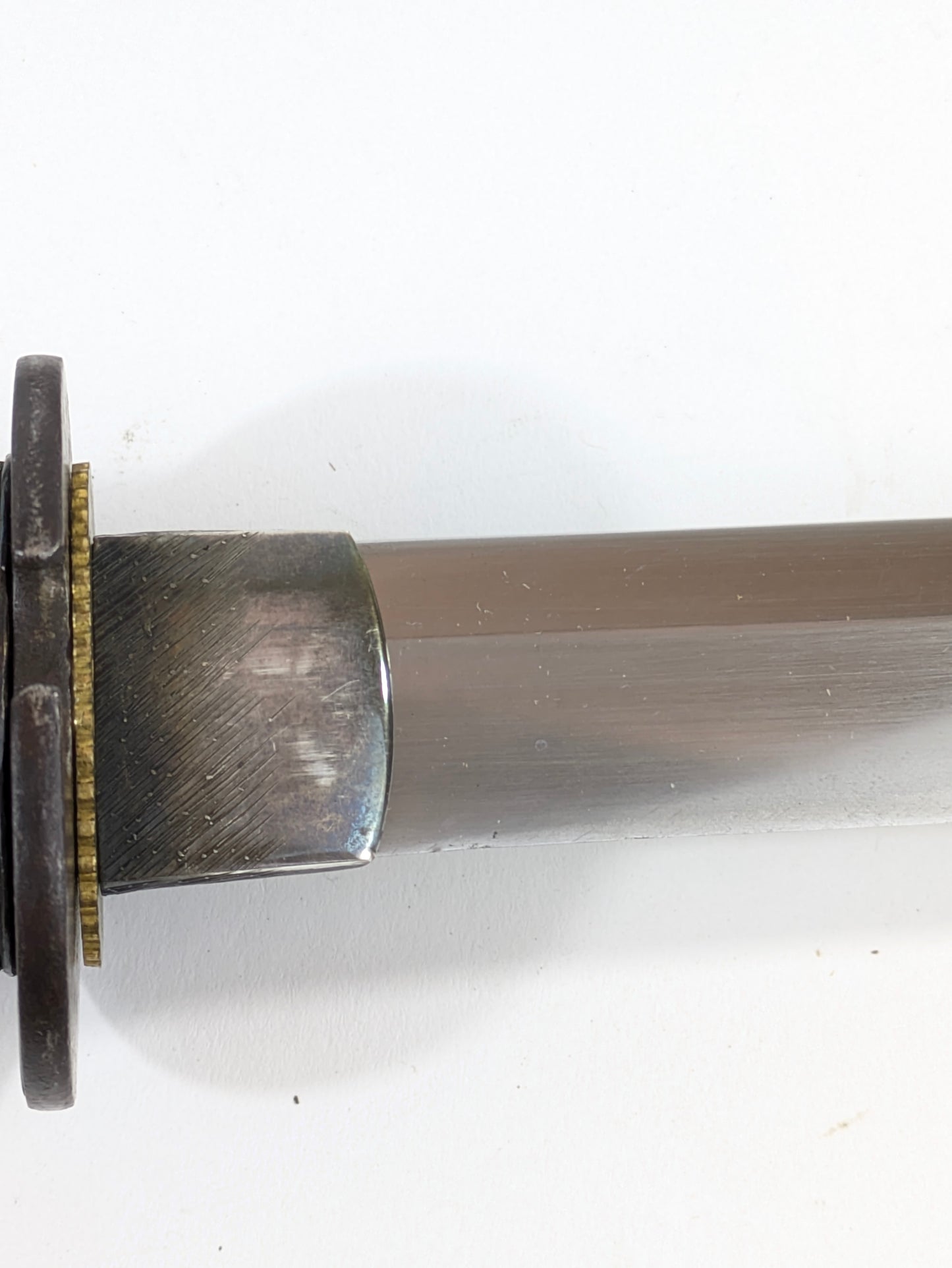Antique Japanese Tanto – Edo Period – Deer and Pine Fittings, Arrowhead Tsuba, Black Lacquer Saya LS122
Antique Japanese Tanto – Edo Period – Deer and Pine Fittings, Arrowhead Tsuba, Black Lacquer Saya LS122
Couldn't load pickup availability
A beautifully mounted Edo-period Japanese tanto (短刀), complete with all original koshirae (mounts), featuring an elegant nature motif of deer grazing beneath pine trees — symbols of longevity, peace, and endurance.
The blade is hand-forged in the hira-zukuri form with a straight suguha hamon and visible hada grain. The nakago is unsigned (mumei) and shows two mekugi-ana, suggesting remounting across generations. Its silvered copper habaki bears precise cross-hatched yasurime file marks, a detail reserved for finer work.
The fuchi-kashira (hilt fittings) depict deer among pine boughs in finely carved gilt metal — an auspicious motif celebrating the harmony of nature and long life. The tsuka (handle) is bound in indigo-dyed cord over ray skin (samegawa) and fitted with a gilt chrysanthemum menuki, emblem of renewal and Imperial lineage. The iron tsuba is mokko-gata in form and bears an engraved arrowhead (yanone), representing vigilance and martial virtue.
The saya (scabbard) is finished in polished black urushi lacquer, accented by gilt koiguchi and kojiri fittings in a bamboo motif, symbolizing uprightness and resilience — completing a harmonious Edo aesthetic.
Features
-
Edo period (19th century)
-
Blade: Hira-zukuri, hand-forged, suguha hamon, visible hada
-
Nakago: Mumei, two mekugi-ana
-
Fuchi-kashira: Gilt deer and pine design
-
Tsuba: Iron mokko-gata with engraved arrowhead (yanone)
-
Habaki: Silvered copper with cross-hatched yasurime
-
Tsuka: Indigo-dyed cord wrap, samegawa base, gilt chrysanthemum menuki
-
Saya: Black urushi lacquer with gilt bamboo mounts
-
Overall length: approx. 30 cm
-
Blade length: approx. 20 cm
Condition
Good antique condition with light lacquer wear and age patina. Blade retains polish and activity, with minor forging marks typical of authentic Edo craftsmanship.
The deer (shika) and pine (matsu) together symbolize longevity and peaceful endurance, often associated with the autumn season and the ideal of a long, harmonious life. The arrowhead (yanone) on the tsuba provides a contrasting martial symbol — readiness and protection — completing a balanced vision of the samurai’s dual nature: serenity and strength.
Japanese tanto, Edo period, samurai dagger, deer pine motif, shika matsu, hira-zukuri, urushi lacquer, yanone tsuba, chrysanthemum menuki


















































